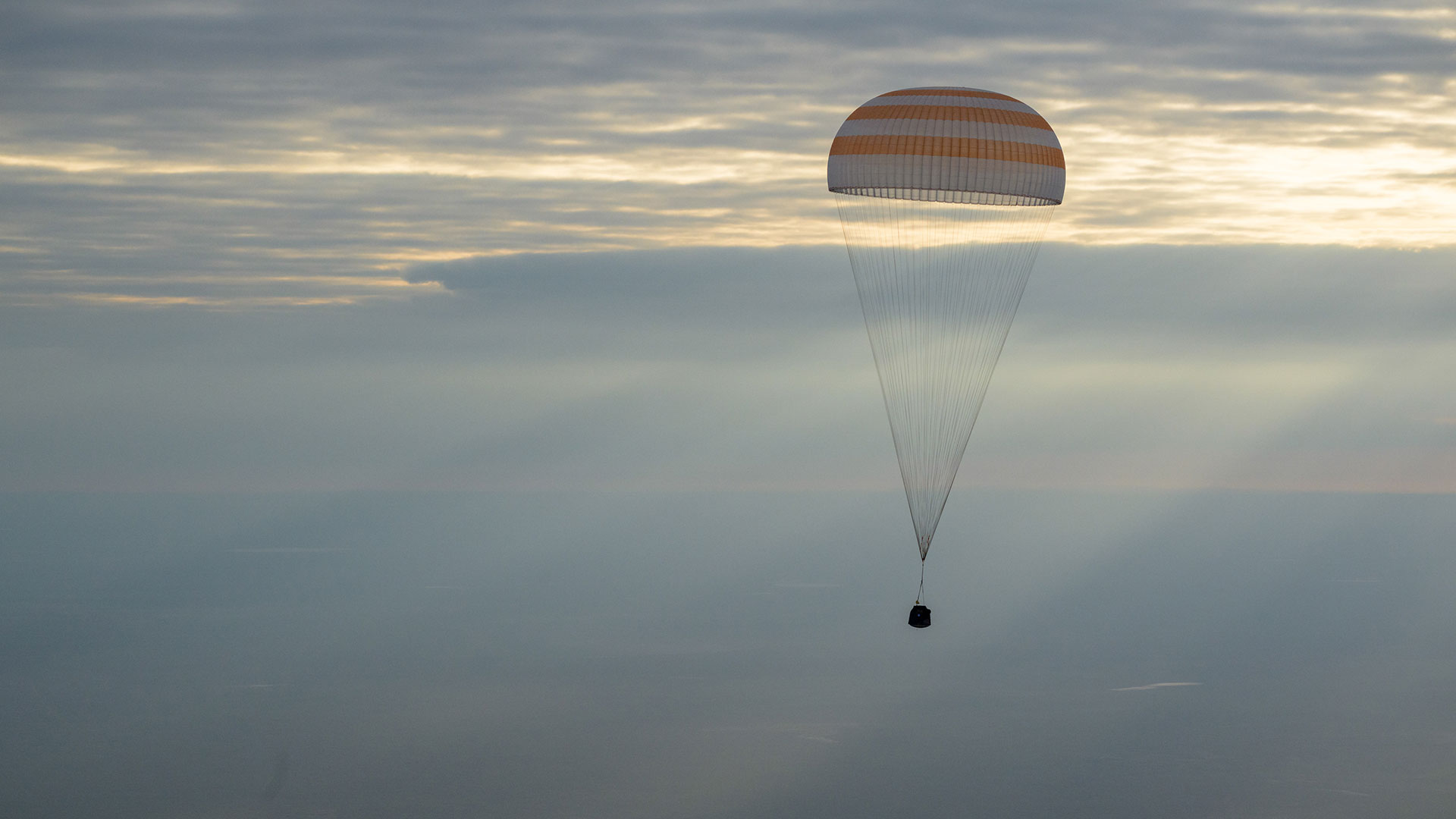NASA's Artemis 1 Orion spacecraft reaches maximum distance from Earth today
The Artemis 1 spacecraft will be farthest from Earth Monday (Nov. 28) before turning around to return home.
NASA's Artemis 1 mission will reach its maximum distance from Earth today.
Artemis 1, the first flight of the Artemis program, will see the Orion spacecraft get nearly 270,000 miles (435,000 kilometers) from Earth on Monday (Nov. 28), NASA officials wrote in a statement.
Orion has already surpassed the previous farthest distance from Earth reached by a human-rated spacecraft on its journey around the moon. On Saturday (Nov. 26), the uncrewed capsule flew past the record-setting distance achieved by the Apollo 13 crewed command module, surpassing 248,655 miles (400,171 km) from Earth at about 8:40 a.m. EST (1340 GMT) that day.
Orion is an uncrewed journey around the moon to let NASA engineers assess the spacecraft's readiness ahead of human missions, which are currently planned to begin with the crewed Artemis 2 mission looping around the moon in 2024 or so.
In photos: Amazing views of NASA's Artemis 1 moon rocket debut
You can follow live views in real time either through this camera feed, or as an animation, on this NASA website. The animated website shows how far Orion is from Earth at any given moment.
The website shows Orion in space, along with its mission elapsed time, velocity, and distance from Earth and the moon. You can look at different views of the spacecraft by switching between solar array cameras or views of the mission track or spacecraft.
Get the Space.com Newsletter
Breaking space news, the latest updates on rocket launches, skywatching events and more!
Orion is set to return to Earth on Dec. 11 with a splashdown in the Pacific Ocean, as long as the mission continues to go to plan.
Elizabeth Howell is the co-author of "Why Am I Taller?" (ECW Press, 2022; with Canadian astronaut Dave Williams), a book about space medicine. Follow her on Twitter @howellspace. Follow us on Twitter @Spacedotcom or Facebook.
Join our Space Forums to keep talking space on the latest missions, night sky and more! And if you have a news tip, correction or comment, let us know at: community@space.com.

Elizabeth Howell (she/her), Ph.D., was a staff writer in the spaceflight channel between 2022 and 2024 specializing in Canadian space news. She was contributing writer for Space.com for 10 years from 2012 to 2024. Elizabeth's reporting includes multiple exclusives with the White House, leading world coverage about a lost-and-found space tomato on the International Space Station, witnessing five human spaceflight launches on two continents, flying parabolic, working inside a spacesuit, and participating in a simulated Mars mission. Her latest book, "Why Am I Taller?" (ECW Press, 2022) is co-written with astronaut Dave Williams.
-
DrRaviSharma Reply
I wanted to ask two Questions:Admin said:The Artemis 1 spacecraft will be farthest from Earth Monday (Nov. 28) before turning around to return home.
NASA's Artemis 1 Orion spacecraft reaches maximum distance from Earth today : Read more
Are we monitoring real life support systems such as consumption of oxygen, dumping of waste water, monitoring contamination and also using backup manual inertial systems such as star trackers. This would in addition to bio-parameters of robotic astronauts would be a good test, if it is being done?
Why did the NASA team not use the Orion orbiting capability to go in orbit around the lunar south pole as this would have simulated Artemis 2 path towards success and proven orbit maneuvering capabilities more than a mere large orbit for radiation and other monitoring and maybe they had enough fuel to do both?Can this be added to the mission now; of course some increase in risk for safe return and landing test on the earth?
Ravi
(Dr. Ravi Sharma, Ph.D. USA)
NASA Apollo Achievement Award
Chair, Ontology Summit 2022 -
billslugg The "Distant Retrograde Orbit" requires less fuel to enter and maintain than a direct orbit.Reply -
DrRaviSharma Thanks Billslug - but are we fuel limited on Orion?Reply
But we will need that capability for Artemis 2 with additional 4 astronauts and their life support etc. anyway? -
billslugg With no one on board they could probably enter whatever orbit they wanted. I suppose they are simply practicing fuel conservation techniques. When they land this at the poles of the Moon, the fuel requirements will be much greater as they must change the orbital plane in order to land at the poles. More fuel means more rocks can be brought back.Reply









